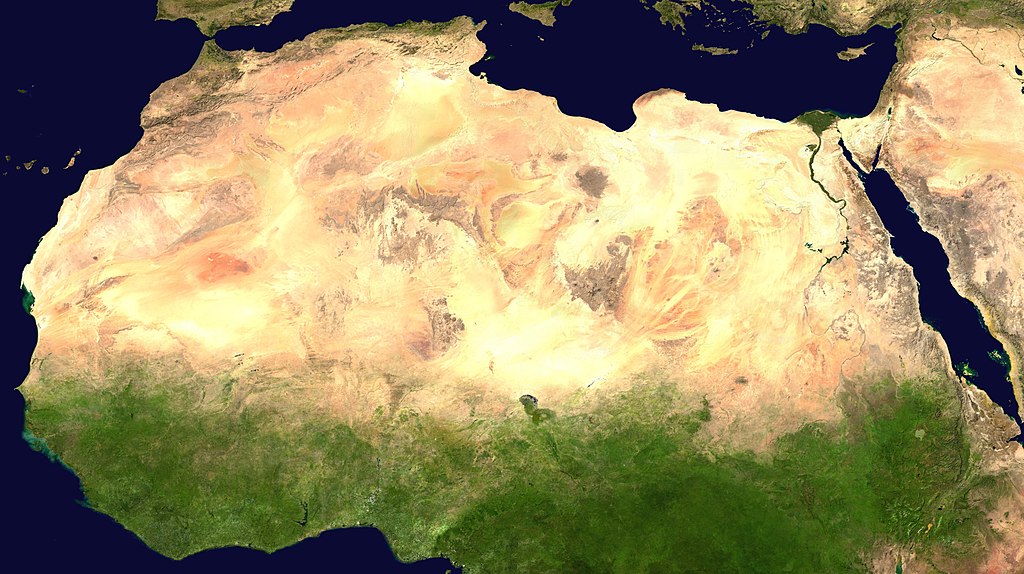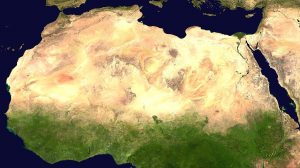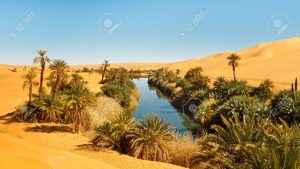7 Interesting Facts About the Sahara Desert

The Sahara Desert is an interesting piece of land located in North Africa.
This desert is the third-largest in the entire world, surpassed only by Antarctica and the Arctic—both of which are cold deserts. That makes it the largest hot desert on earth.
Interested in learning more about this amazing place? here are seven interesting facts about the Sahara!
7. The Sahara is absolutely huge
Imagine a desert roughly the size of the United States or China! It is estimated that this desert takes up a mind-boggling 9,200,000 square kilometers, which is equal to 3,600,000 square miles.

The desert is bordered on the east by the Red Sea and on the west by the Atlantic. On the north are the Atlas Mountains, and in the south is the Niger River. The name “Sahara Desert” is a bit redundant, by the way. “Sahara” actually means desert in Arabic, so when you say “Sahara Desert,” you are essentially saying “Desert Desert.”
6. There are ongoing shifts in the Sahara’s climate
It may be tempting to think that a desert is always hot and dry, but there are many variations in the weather and climate of this one. In fact, there are ongoing shifts in the Sahara desert climate which follow an incredibly long cycle—around 41,000 years. Why 41,000 years? This has to do with a change in the tilt of the earth’s axis between 22 and 24.5 degrees.

Indeed, in around 15,000 years, the desert should become far more green than it is today. The desert has also experienced greener periods in the past as evidenced by prehistoric drawings in caves which indicate that there was once plenty of plant life where today the land is barren. Areas that today would be un-farmable were at the time fertile cropland.
5. There are significant variations in elevation throughout the desert
The lowest point in the Sahara is the Qattara Depression, located at−133 m (−436 ft). The highest point by contrast is Emi Koussi, a shield volcano that stands at 3,415 m (11,204 ft). Even the sand dunes in this desert can soar to a tremendous height. Some reach up to 180 m (590 feet).
Read more: facts About Dangote oil refinery and petrochemical complex
4. Very few people live in the Sahara
Only around 2.5 million people inhabit the Sahara. When you consider that this is an area the size of the United States, you can appreciate that this is also one of the lowest population densities to be found anywhere.
Most of the population clings to the banks of rivers and lakes, and most of them live a nomadic lifestyle as it is necessary to survive in such a harsh climate. So while the Sahara may be an unforgiving and desolate environment, it is certainly a good place to go to get away from it all.
3. Sometimes the Sahara can be quite cold
While the Sahara is classified as a hot desert, sometimes it’s actually quite cold, particularly at night time starting in December and continuing through February.
It is not unusual for temperatures to drop below freezing. And once in a great while, heavy snow may even fall as it did in 2016 for the first time recorded in 37 years.

The sight of snow-capped sand dunes is certainly an unusual one, but some of the pictures from that December are magnificent.
It is also well worth it to check out pictures of the previous snowstorm from 1979. Some of these photos are just as incredible. The snow was so intense that year that it stopped traffic in the region. That said, it didn’t last very long. Within a few hours, it had melted entirely.
Wondering how hot the Sahara gets? During summer, the average high temperatures range to around 40°C. Sometimes they may surge as high as 47°C.
2. The Sahara Desert is anything but lifeless
When you picture a desert, it is easy to imagine nothing but endless miles of sand dunes and barren rocks. But in reality, the desert is a complex ecosystem, and the Sahara is teeming with life. There are estimated to be around 1,200 plant species inhabiting this desert.
There are so many different species of animals and birds. Some of these include gazelles, antelopes, monitor lizards, cheetahs, wild dogs, vipers, and ostriches. Like the human inhabitants of this desert, many of these species are nomadic, migrating in order to follow the water supply throughout the year.
1. The Sahara actually has a number of sub-regions
These sub-regions are known as ecoregions and are defined according to their different precipitation, temperature, elevation, and soil characteristics. Along the west coast for example is the Atlantic coastal desert, which is able to support succulent plants, lichens, and shrubs. In the north is the North Saharan steppe and woodlands. Other ecoregions include the Sahara Desert ecoregion, the South Saharan steppe and woodlands, the West Saharan montane xeric woodlands, the Tibesti-Jebel Unweinat montane xeric woodlands, the Saharan halophytes, and the Tanezrouft.
Some of these areas are particularly desolate and devoid of life. The Tanezrouft for example has almost no vegetation. Other areas however have watercourses which run for part of the year as well as rainfall. This is why the South Saharan steppe and woodlands contain pastures, shrublands, and even dry forests. Most of the Sahara isn’t even comprised of sand at all.
So now you know more about the Sahara! The third-largest desert in the world covers a huge amount of land and is a very unique place. If you are touring Africa and have a chance, you should definitely visit—the experience is one you will never forget.
Just remember that it is an unforgiving place, and you should come well-prepared.
